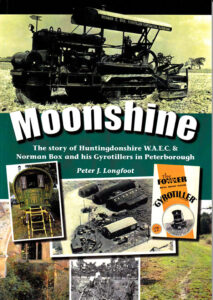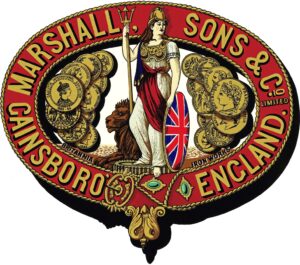Marshall History Pt.3 Britannia News 1958
- At February 18, 2022
- By Andrew Birkitt
- In History
 0
0
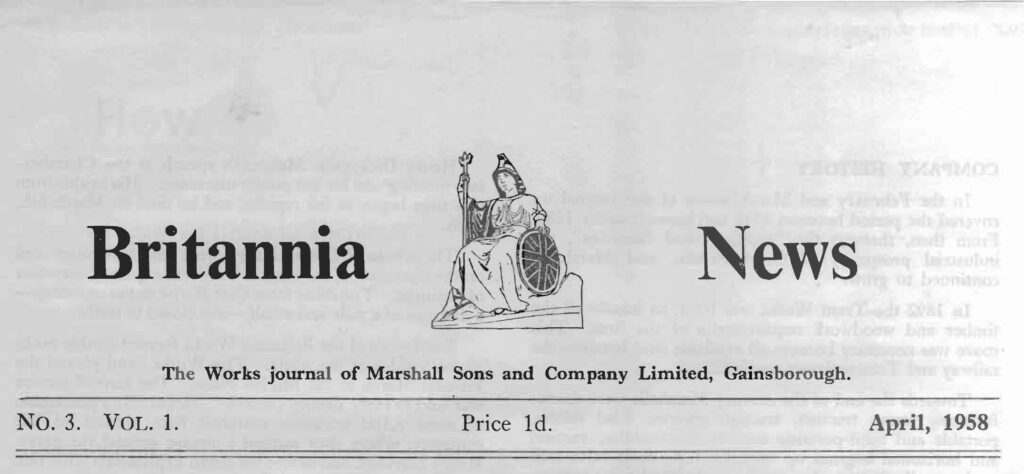
In the February and March issues of our journal we covered the period between 1848 and approximately 1880. From then, through the “eighties” and “nineties”, the industrial prosperity of Great Britain, and Marshalls, continued to grow.
In 1892 the Trent Works was built, to handle all the timber and woodwork requirements of the firm. This move was necessary because all available land between the railway and Trinity Street was built on.
Towards the end of the century Marshalls were manufacturing steam tractors, traction engines, road rollers, portable and semi-portable engines, locomobiles, vertical and horizontal engines up to 2,000 h.p., drop-valve mill engines, oil engines, Lancashire and allied type boilers, threshing machines, elevators, flax machinery, maize shellers and gold dredging machinery.
By 1900 Marshalls had won no less than 300 Gold and Silver medals at International Exhibitions. In this year they were awarded the Grand Prize at the Paris Exhibition, for portable, vertical, horizontal and compound engines, steam rollers and threshing machines. By 1904 the Company employed 3,500 men and boys, and at that time no less than one-fifth of the population of Gainsborough was employed by Marshalls.
Despite Marshall’s long period of industrial expansion, James and Henry Marshall clearly recognised that neither the Firm, nor the Nation, could count on its continuance indefinitely.
In the last ten years of the nineteenth century British agriculture had suffered a second depression, during which the corn-growing area of England and Wales shrank by more than a quarter.
For the sale of their agricultural machinery therefore, Marshalls had become more and more dependent on their foreign markets, in which Germany and the United States were arising as formidable competitors.
At the end of the Boer War, Joseph Chamberlain decided that the time bad come for Great Britain to forsake her allegiance to Free Trade. James and Henry Marshall were also of this opinion, and Henry was appointed as representative of the Agricultural Machinery Section on the Tariff Reform Commission.
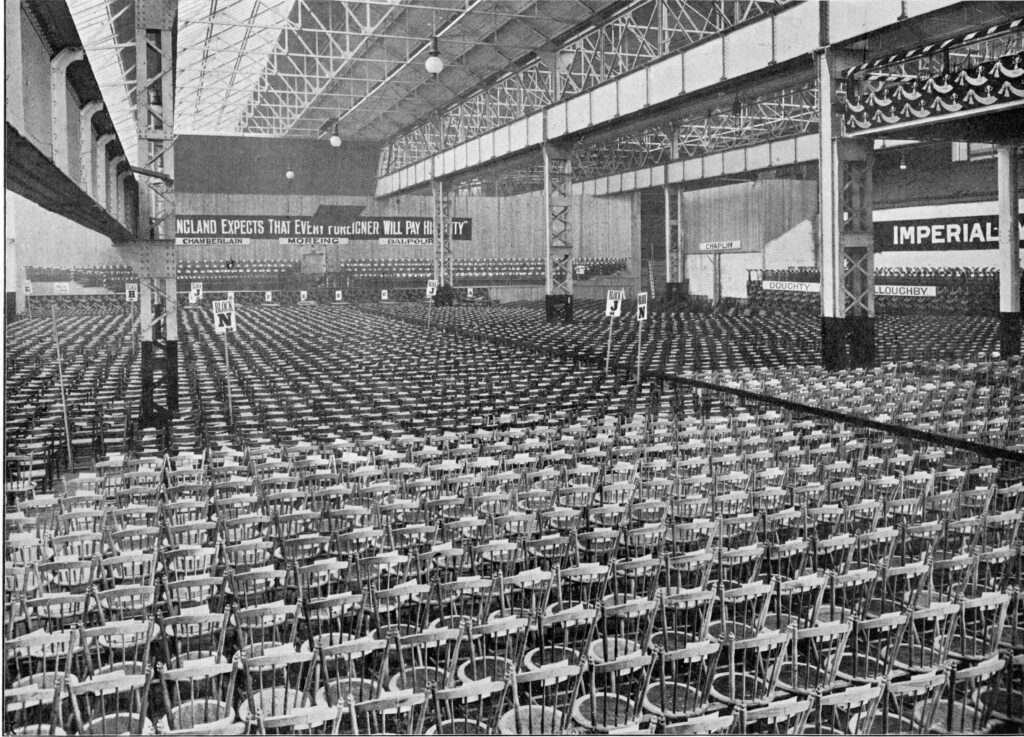
In 1904 Joseph Chamberlain came to Gainsborough and addressed a mass meeting in the Britannia Works on behalf of the local parliamentary candidate who supported Fiscal Reform. Marshalls had just finished building their great machine shop, which was described by the local press as “possibly the largest of its kind in the world”. This was prepared for the meeting, with seats for over 7,000. 17,000 applications were made for tickets, and the building was filled two hours before the meeting started. Henry Dickenson Marshall seconded the main resolution. James Marshall was absent on the advice of his doctor.
It should be added that shortly afterwards Sir Edward Grey, later Lord Grey of Falloden, came to Gainsborough and spoke against Tariff Reform, and that the 1906 election showed that the majority of the electorate was not then willing that the country should abandon Free Trade.
Henry Dickenson Marshall’s speech at the Chamberlain meeting was his last public utterance. His health from this time began to fail rapidly, and he died on March 6th, 1906.
The whole of Gainsborough went into mourning, and on the afternoon of the funeral there was a general cessation of business. The route from Carr House to the cemetery a distance of a mile and a half-was closed to traffic.
Employees of the Britannia Works formed double ranks on both sides of the route. The Works band played the Funeral March in the Market Place. The funeral service was held in Holy Trinity Church. Meanwhile a procession of some 3,500 workmen marched four abreast to the cemetery, where they formed a square around the grave. Henry Marshall had before his death expressed a wish that his body should be borne to the grave “between my own workmen”.
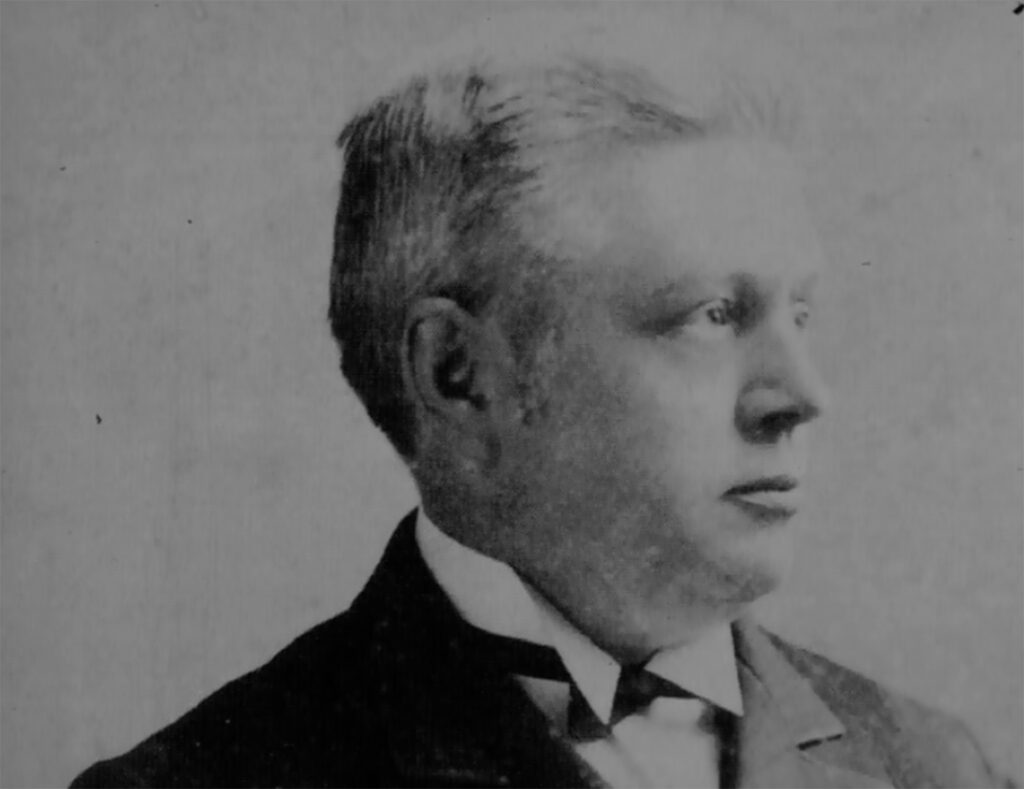
Henry Dickenson Marshall was elected a member of the Institution of Mechanical Engineers in 1885 and a member of its Council in 1889. In the latter year he also became a foundation member of the County Council. He was on the Councils of the Royal Agricultural Society and the Agricultural Engineers’ Asosciation, of which last he was for a time President, and was a member of the Executive Board of the Engineering Employers’ Association. From 1892 onwards he was a Justice of the Peace. (To be continued)
